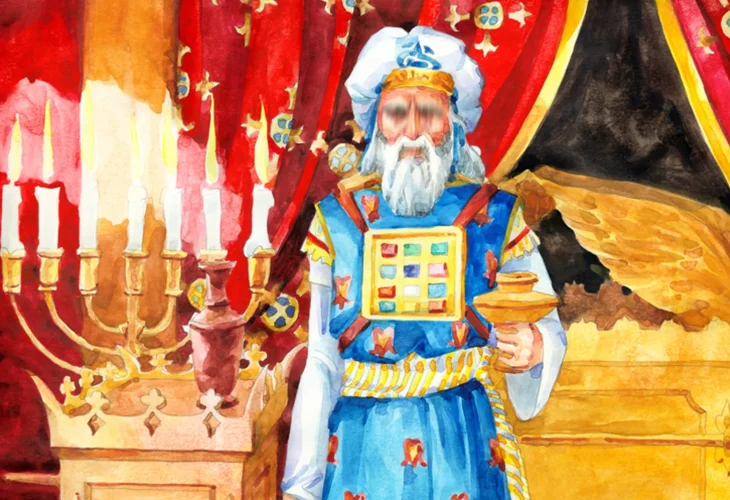Issues in the Bible
The Secret of the Priestly Garments: How the Kohen’s Clothing Atones for Sin
The sacred garments of the Kohen Gadol carried spiritual power to heal the soul, inspire repentance, and reflect the divine image within humanity
 (Illustration: shutterstock)
(Illustration: shutterstock)Parshat Tetzaveh describes in great detail the design and appearance of the priestly garments — the sacred vestments worn by the Kohanim in the Temple.
The Sages teach something remarkable in the Talmud (Zevachim 88b): Each garment of the Kohen Gadol (High Priest) atones for a specific sin:
The tunic (ketonet) — atones for bloodshed.
The pants (michnasayim) — atone for sexual immorality.
The apron (ephod) — atones for idolatry.
The turban (mitznefet) — atones for arrogance.
The belt (avnet) — atones for impure thoughts of the heart.
The breastplate (choshen) — atones for perversion of justice.
The robe (me’il) — atones for lashon hara (evil speech).
The golden plate (tzitz) — atones for brazenness and shamelessness.
Interestingly, this list includes both the gravest sins in the Torah — idolatry, sexual immorality, and murder, and also the subtle moral failings that everyone struggles with daily, such as arrogance, gossip, and stray thoughts.
The Talmud even says: “There are three things from which no one is free each day — thoughts of sin, hints of gossip, and distractions of prayer.” (Bava Batra 164b)
Why Do Clothes Bring Atonement?
Of all the Temple rituals — sacrifices, incense, and offerings, why should garments, which are not used in any direct act of worship, bring atonement? And not only for minor faults, but even for the most serious sins?
The commentators explain that the atonement here is not for the sinner himself, but rather for those around him — the people connected to him, who are “mutually responsible” (arevim zeh bazeh).
The Tosafot and the Shelah HaKadosh explain that this refers to those who stumbled in the “fringes” (avizraihu) of these sins — in milder or indirect forms. The Maharsha adds that it applies to those who sinned unintentionally.
Still, the question remains: Even an unintentional or indirect sin requires repentance and atonement — so how can the mere existence of the priestly garments accomplish that?
The Symbolic Power of the Priestly Image
The answer lies in what the garments represent. The priestly garments embody the ideal human form — a vision of dignity, discipline, and holiness. When the Kohen stands before God, he personifies the elevated image of what humanity is meant to be.
Each garment carries a specific moral message:
The pants teach modesty — even when ascending the altar, the priest’s body remains covered, preserving reverence before the sacred stones.
The robe, with its bells that ring as the priest walks, atones for evil speech: unlike gossip, which is whispered in secret, the bells declare the priest’s every movement. The Kohen cannot act unseen or speak behind another’s back, as his presence is always heard and known.
The tunic atones for bloodshed, symbolizing the sanctity of the human body. When Joseph’s brothers stripped him of his tunic, they degraded his humanity — the first step toward violence and murder.
The golden plate (tzitz) rests upon the priest’s forehead, reminding him to govern his thoughts, to restrain boldness and pride.
What the People Saw — and Felt
These were not abstract ideas. When ordinary Israelites came to the Tabernacle, they saw the Kohen Gadol in his garments — and that sight alone stirred the soul.
They saw his dignified bearing, heard the sound of his bells,
noticed his humility and discipline — and something within them was moved to purity.
Even without conscious reflection, they were elevated by what they witnessed. Their share in these sins of gossip, pride, corruption, and cruelty, was softened and purified through the example of the priest, who embodied holiness on their behalf.
That, perhaps, is the deepest meaning of the Sages’ teaching:
the garments atone not by ritual action, but by moral influence.
Through them, the Kohen radiates holiness outward — inspiring the people to become what they were intended to be: “A kingdom of priests and a holy nation.” (Shemot 19:6)

